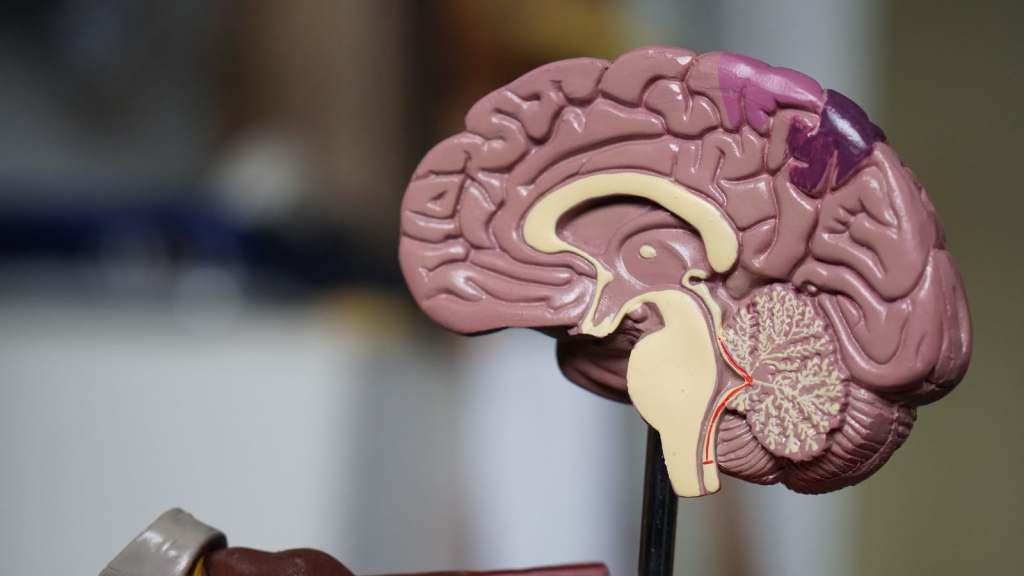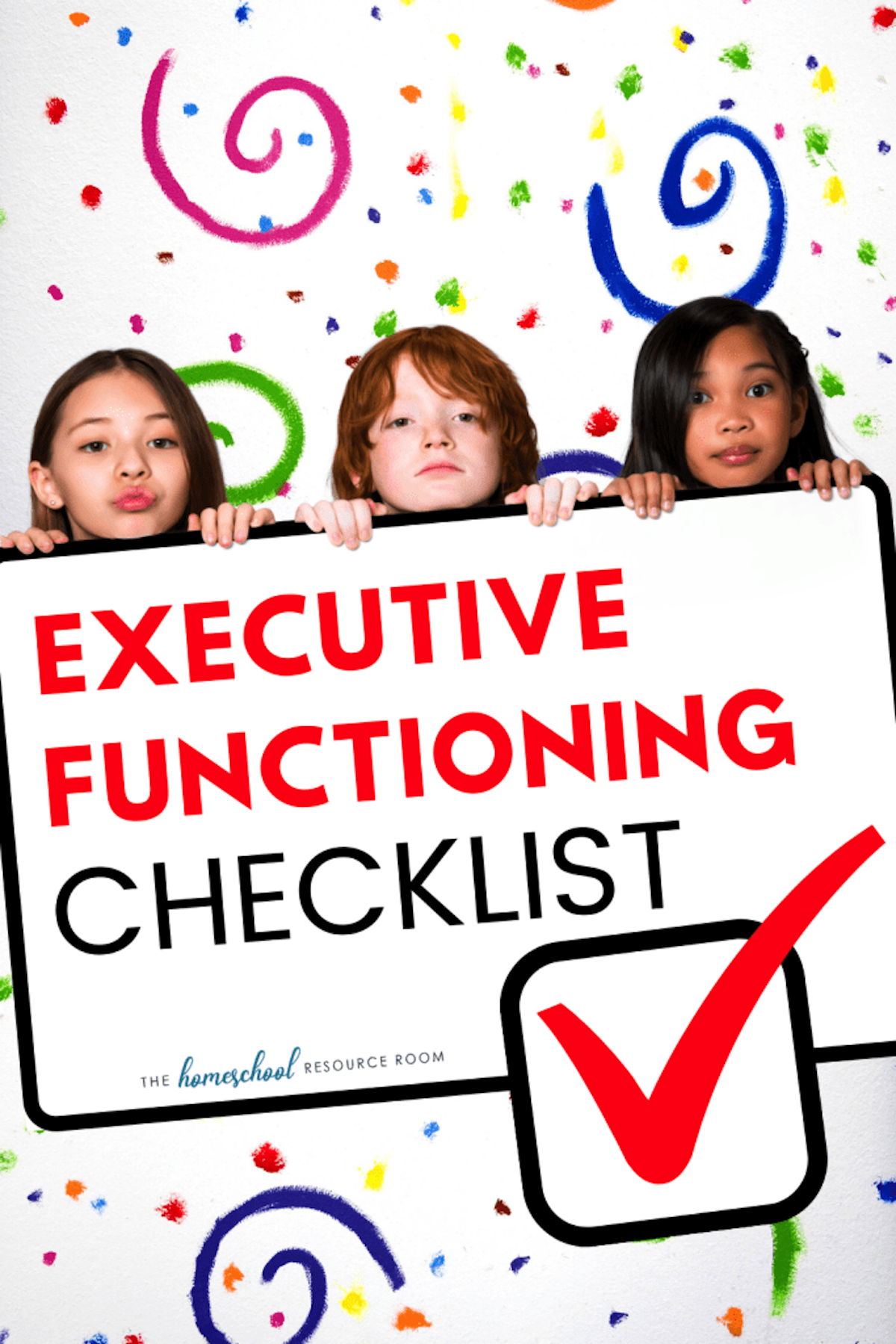This post may contain affiliate links. See our disclosure policy for details.
Filling out an executive functioning checklist was a common task for me as a teacher. Every year, I’d have at least a handful of children being evaluated for ADHD, Autism, a learning disability, anxiety, or other conditions that might manifest themselves at least partially with executive dysfunction. While I was trained and familiar with the process, I knew it could be very overwhelming or confusing for parents just learning about executive functioning. This was especially hard for parents who had been agonizing while their child struggled and they just wanted to help.
If you find yourself in the same boat, don’t panic! Executive functioning is a broad concept, but one you can understand with some basic definitions, examples, and a little background knowledge. Hopefully the information I can provide you here will help you start having conversations with your child’s teacher, pediatrician, therapist, and/or the rest of your family. Then, you’ll be able to come up with some strategies for overcoming your child’s unique blend of executive dysfunction.

What is executive functioning?
Broadly speaking, executive functioning is a name given to a family of brain processes that all work together to help you remember, plan, and do daily activities. When someone manages to wake up on time, eat breakfast, get dressed, gather necessary supplies, handle a cut while shaving, and leave for work on time, they’re using all eight executive functions.
The eight executive functions exist with some overlap (as you’ll see in the checklist), but are usually categorized as follows:
- Response inhibition (aka impulse control)
- Planning & prioritizing
- Emotional control
- Mental flexibility
- Working memory
- Task initiation
- Self-monitoring
- Organization
All children will likely struggle with some aspect of executive functioning (which then is frequently called an executive dysfunction) at some point in their lives. This is because children’s brains develop at different rates, and they mature in fits and spurts. If you don’t believe me, first find me a child who walked out of the womb understanding how to get to bed on time!
However, children who struggle with multiple functions for long periods of time likely won’t just ‘grow out’ of their challenges. Though causes are still being studied, some children seem to simply have brains that aren’t wired the same and seem predisposed to executive dysfunction. Kids in this boat generally use targeted interventions that help them improve in their weak areas. (If you’re looking for strategies and activities to do at home to work on executive functioning, you should check out my Masterlist!)
Before you can think about interventions, however, you’ll need to know specifically what areas of executive functioning are a struggle for your child. And that’s where the checklist comes in.
How to use the executive functioning checklist

As with any hallmark of parenting, this checklist is a multitasker. First of all, it provides you and your child useful information that helps you understand his or her beautiful little brain better. In addition, it provides good data for other professionals to use when further examining what kinds of interventions, diagnoses, and/or medications might best help your child improve and thrive. Like I mentioned at the start, executive functioning checklists are frequently seen at school IEP meetings, and they also pop up in pediatrician appointments and therapy sessions.
I find it’s useful to first look at the executive functioning checklist yourself and complete an inventory of your child (or possibly jointly with your spouse). That way, you have a good snapshot of how you view your child’s strengths and weaknesses before you hear how they personally view themselves. Then, depending on your child’s age, you can either give them a copy of the checklist and have them do a self-evaluation, or you can verbally ask them to go through the questions with you.
Feel free to compare notes at the end, but be sure not to try and sway their answers one way or another until then. Allow them to share their view of themself in total honesty. In addition, “self-monitoring” is an executive function itself, and a radically different understanding of themselves when compared to how others see them is essentially data in its own right.
About this Checklist
There are no “right” answers to the checklist, just as there are no wrong answers. This is not a diagnostic test either. The executive functioning checklist exists to give you a better understanding of your kiddo, their strengths, and their weaknesses. When you and your child have finished completing your executive functioning checklist, you can bring them with you to meetings or appointments and the professionals can take over from there. With you and your child, they’ll help you make targeted behavior plans, talk about interventions, and any other therapeutic ideas they have, if you jointly see a need.
And that’s it! So without further ado, I present to you…
The Executive Functioning Checklist
Response inhibition (aka impulse control)
- Makes careless mistakes just to get work ‘done’
- Gives up as soon as they encounter a problem or challenge
- Blurts out answers instead of raising hand
- Does all the fun parts of an assignment first to avoid the hard parts
- Starts work before teacher finishes giving directions
- Engages in ‘risky’ behavior
- Avoids or doesn’t complete homework
- Struggles to take turns
- Interrupts others while they’re talking
- Touches others bodies or possessions without permission
Planning & Prioritizing
- Can’t chunk larger assignments into smaller pieces
- Doesn’t know where to start on a project or assignment
- Gets ‘stuck’ easily
- Often turns in assignments late because they underestimated complexity
- Prefers multiple choice questions to open-ended responses
- Struggles to take notes since everything seems equally important
- Has difficulty making decisions
- Struggles with strategizing and/or multi-step problem solving
Executive Functioning Checklist: Mental flexibility
- Can become fixated on aspects of a routine (wants to sit in the same place, eat the same food, wear the same clothes, etc)
- Struggles with transitions: between classes, activities, home/school, weekend/weekday, etc
- Copes poorly when schedules or routines change
- Can become ‘hyperfocused’ on one topic, idea, activity, etc
- Struggles to switch gears
Working Memory
- Really struggles to take notes from lectures (writing and listening at the same time)
- Experiences ‘information overload’ easily when too much is presented too quickly
- Finds mental math especially challenging
- Struggles to remember multi-step directions and follow them out
- May frequently forget what they were planning to say after raising hand or starting to speak
- Might need to read text passages (especially dense or long-winded ones) over and over to fully comprehend meaning
- Struggles with tracking the flow of conversations and participating appropriately
Emotional Control

- Can have angry outbursts at slight provocations
- Quick to call things ‘unfair’
- Struggle to persevere through difficulties in homework
- Overreacts to negative situations (when disciplined, getting a bad grade, losing a game)
- May unexpectedly laugh hysterically or burst into tears
- Seems to have rapid mood changes
- Appears not to care about others’ feelings
Executive Functioning Checklist: Task Initiation
- Doesn’t know where to start on an assignment or project, even if directions were just given
- Has trouble focusing again after a break
- Procrastinates starting work until the last minute
- Finds other things to do instead of work (frequently going to the bathroom, sharpening pencil, being on phone, etc)
- Frequently seen with their head down during work time
- Asks for help all the time, even when you know they understand the material and are capable of the work
Self-Monitoring
- Unaware of how much effort they do or don’t put into their work
- Think of grades somewhat magically, and confused/surprised by poor grades
- Doesn’t recognize when their behavior negatively affects others
- Talks too loudly or quickly
- Might need to be told to sit down, stop touching that, put that down, etc, multiple times
- Doesn’t think to check around them to gauge appropriate social behavior
- Might unknowingly exhibit “annoying” repetitive behaviors like pencil tapping, knee-bouncing, or the like, even when others complain.
Organization
- Frequently loses assignments, supplies, library books, important messages, etc
- Doesn’t change behaviors, even if they seem to want to/see consequences for disorganization
- Doesn’t use planners, even if given one
- Has a disastrous-looking backpack, bedroom, and/or work space and has trouble finding anything
- Loses electronic files/emails because they can’t remember where they stored them, or under what file name
Where to go Next
Now that you’ve finished going through your executive functioning checklist for yourself and with your child, you probably have a much better picture of their strengths and weaknesses!
I’ll suggest once again that you hop over and read the next article in this little series on executive functioning, the Executive Functioning Activities Masterlist. There, you’ll find a one stop shop for all kinds of fun games and activities that help your child build up their weak areas of executive functioning.
For further reading on this topic:
- Help My Child Focus Naturally: 5 Tried and True Strategies for Home
- 25+ Learning Accommodations for ADHD
- Sanity-Saving Activities for Children with Anxiety
- Homeschooling & ADHD: Set Yourself Up for Success
Or browse posts in our special needs category.

Hillary is a former teacher who went rogue and became a freelance writer. When not offering support and advice to homeschooling families, she tends to her own garden, family, and cat. You can connect with her on her website, homegrownhillary.com.

